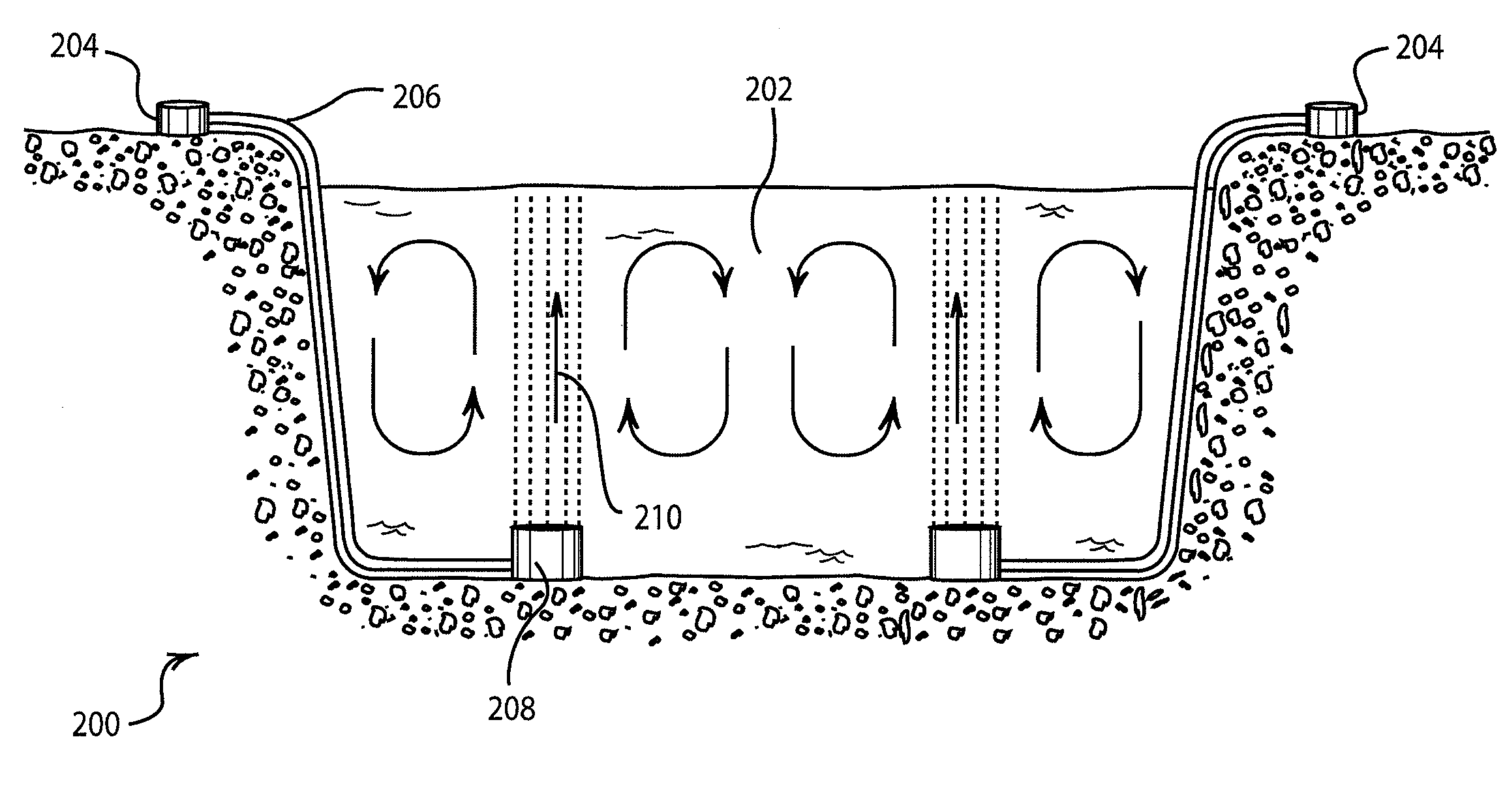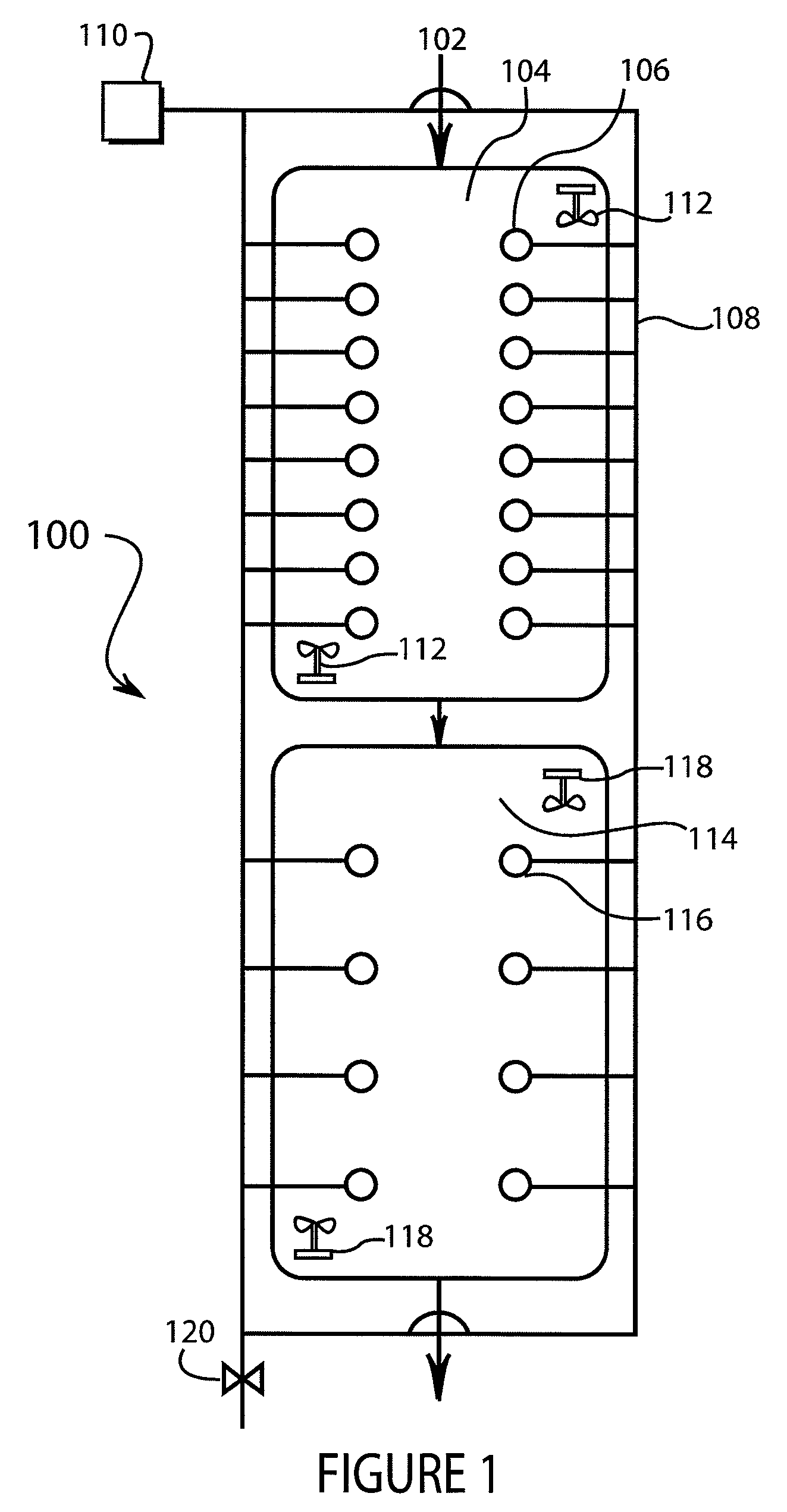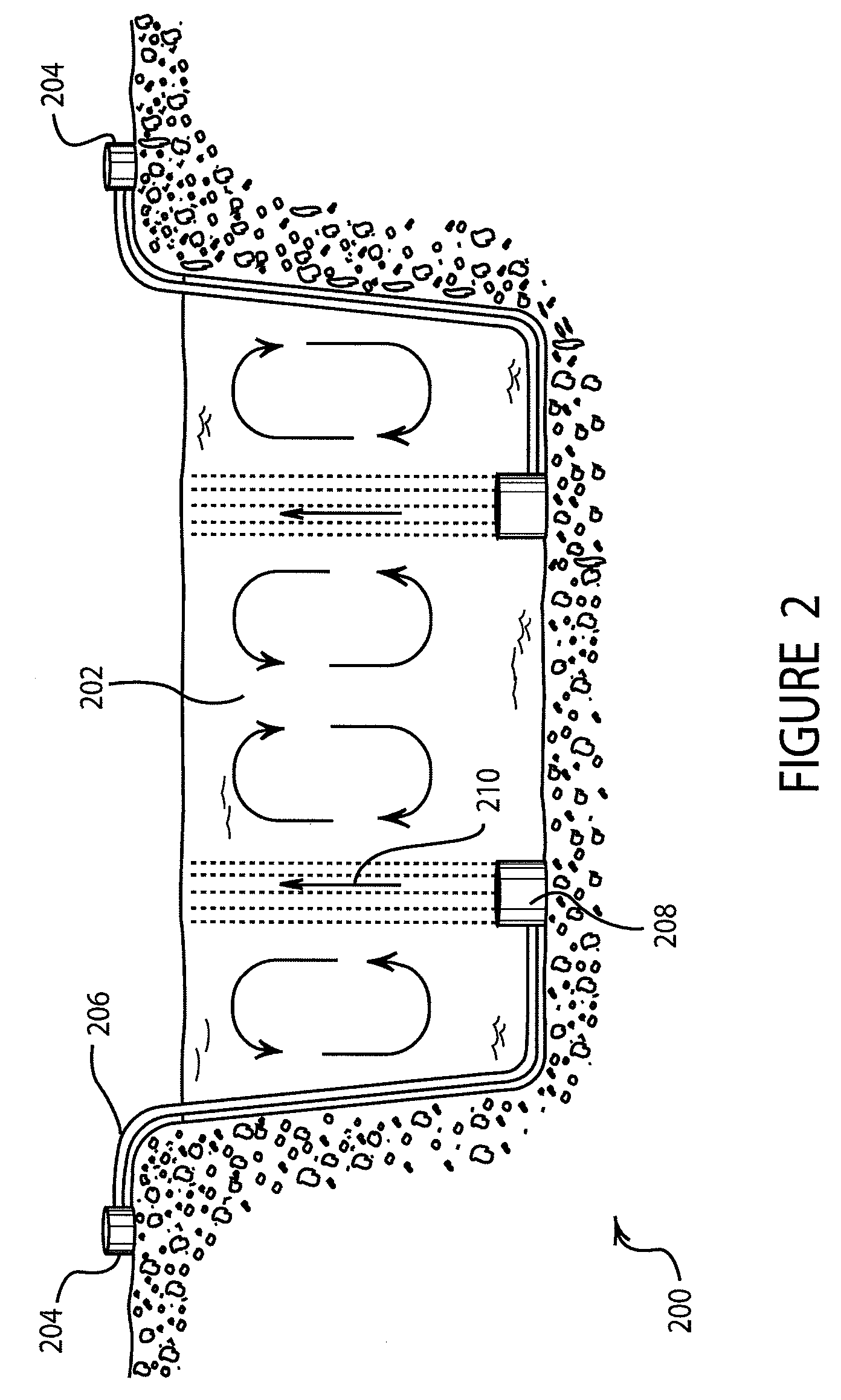Waste treatment method
a technology of waste treatment and waste water, applied in the field of waste treatment, can solve the problems of slow anaerobic process, large anaerobic process, rapid solids buildup, etc., and achieve the effect of small amount of energy, large degree of circulation, and virtually elimination of solid waste in the lagoon
- Summary
- Abstract
- Description
- Claims
- Application Information
AI Technical Summary
Benefits of technology
Problems solved by technology
Method used
Image
Examples
example 1
Experimental Results September 2001:
[0088]Experiments have been conducted using the inventive waste stream digestion system during September 2001 at California Dairies, Inc., of Tipton, Calif.
[0089]The results below were for a 1.43 acre secondary pond receiving approximately 410,000 gallons of influent from a primary digestion pond. The secondary pond had been outfitted with 74 Duraplate diffusers from Keeton Industries. The air supply was a 20 HP two stage regenerative blower producing air at a pressure of 240 inches of water. An ozone generation system producing 10 to 12 grams per hour of ozone was used downstream of the air source. The pond was approximately 10 feet deep.
[0090]The biological oxygen demand (BOD) of the influent was 3841 lbs per day. The transfer rate of oxygen was calculated at 5761 lbs of oxygen per day.
[0091]The results show that the above system has a transfer rate of 12.2 lbs of oxygen per horsepower per hour. This compares to traditional paddlewheel aeration ...
example 2
Experimental Results January 2001:
[0092]The January 2001 results of the Water Pure aerobic bioremediation of dairy waste include the analysis of three dairies, one with a solid separator. The analysis of all three dairy pond systems includes the determination of the Biological Oxygen Demand (BOD), a measure of the organic matter in solution, and the Total Kjeldahl Nitrogen (TKN) for each sample taken. The results of these analyses have allowed the inventive method of bioremediation to be more easily explained and verified.
[0093]It is determined that the decrease in the Electrical Conductivity of the water (ECw) was mainly because of the calcium ion and magnesium ion forming precipitates as carbonates and phosphates. It is assumed that the decrease in the sodium and potassium ion was associated with the incorporation of these more soluble ions into the bodies of the organisms involved in the digestion of the organic matter in the waste. Another observed decrease in cation concentrati...
PUM
| Property | Measurement | Unit |
|---|---|---|
| retention time | aaaaa | aaaaa |
| diameter | aaaaa | aaaaa |
| pressure | aaaaa | aaaaa |
Abstract
Description
Claims
Application Information
 Login to View More
Login to View More - R&D
- Intellectual Property
- Life Sciences
- Materials
- Tech Scout
- Unparalleled Data Quality
- Higher Quality Content
- 60% Fewer Hallucinations
Browse by: Latest US Patents, China's latest patents, Technical Efficacy Thesaurus, Application Domain, Technology Topic, Popular Technical Reports.
© 2025 PatSnap. All rights reserved.Legal|Privacy policy|Modern Slavery Act Transparency Statement|Sitemap|About US| Contact US: help@patsnap.com



